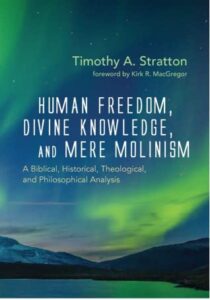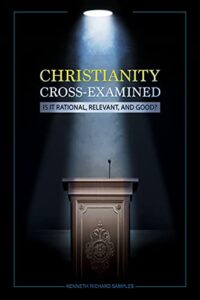Like myself, Caleb Jackson is a layperson, not a scholar. But like myself, Caleb backs up his argumentation with a PLETHORA of footnotes linking to the scholarly literature, and even quotes New Testament scholars and historians to back up his points on every page. Thus, his book’s arguments should be given serious treatment for he stands on the shoulders of giants like N.T Wright, William Lane Craig, Gerd Ludemann, Dale Allison, Michael Licona, Bart Ehrman, James D.G Dunn, and more. He also cites The New Testament and ancient secular Jewish sources well. Jackson’s arguments are backed up by heavy citation and he hardly leans at all on his own credentials.
I was only about 50 pages in before I said out loud “This is a pretty good book!” And I myself am well read in this topic, yet Mr. Jackson kept my attention as though I was reading about this for the very first time. Not only is the content good and in depth, but it is well written. Aside from a few typos here and there, each chapter reads like an essay.
I do wish Caleb had spent time defending the historicity of the crucifixion of Jesus. Although no one in New Testament studies or Ancient Greco-Roman history denies that Jesus existed and died on the cross, a lot of lay atheists do. That’s why I always take time to defend the historicity of the crucifixion in my own defenses of the resurrection. You need Jesus to have lived and died logically prior to Jesus being raised from the dead. But, that said, he did take the time to explain how no scholar worth his salt is a Jesus Mythicist or denies Jesus’ death by crucifixion, and even quotes non-Christian New Testament historians saying as much. Still, it would have been nice to be given a defense given how rampant Jesus mythicism is among layman skeptics, which I anticipate will be the bulk of his readership other than Christians like myself. Maybe Caleb will include a chapter on the evidence for Jesus’ death by crucifixion in the second edition.
Chapter 1 dealt with the evidence for Jesus’ burial and empty tomb. Chapter 3 dealt with the evidence for Jesus’ postmortem appearances and also refuted a few naturalistic theories that attempt to explain these postmortem appearances such as The Hallucination Theory, The GroupThink Theory, and The Swoon Theory. Once we get to chapter 4, Caleb talks about the “Mutation Of Resurrection Belief” in the disciples. He talks about how no one in the first century expected one person to be raised from the dead within history, that Jesus’ death and resurrection went contrary to messianic expectations, and how if the disciples were to be deluded about Jesus’ postmortem fate in any way, it would most likely be some sort of spiritual visitation from Heaven (like a ghost) or a bodily assumption (like Elijah or Job’s children in the extra biblical Testament Of Job). Caleb goes into the historical evidence from both within scripture and in extra biblical sources to show how revivifications like Lazarus, spiritual ghostly visitations, or bodily assumptions like Enoch were beliefs that far better fit the cultural mileu than the idea that Jesus (who got killed like a plethora of other messianic pretenders) was raised to live into an imperishable body never to die again. Caleb Jackson surveys 5 possible scenarios; (1) Empty Tomb without appearances, (2) Spiritual visions without an empty tomb, (3) Spiritual Visions with an empty tomb, (4) Bodily Apperances without an empty tomb, and (5) Bodily Appearances with an empty tomb. Caleb persuasively argues that only that last scenario occuring would convince the disciples that their teacher had returned to them in a resurrected state. He also argues that John’s and Luke’s depictions of Jesus eating and of the disciples’ touching them probably have a historical core, for how else would the disciples come to believe that Jesus was a physical being rather than a ghost unless they could feel him? He also argues that Jesus’ body doing supernatural things like walking through doors and disappearing is likely to be something the 12 disciples experienced. Why? Well, because even if they saw him and touched him, that alone probably wouldn’t convince them that he was RESURRECTED. Revived in a body to die again like Lazarus, perhaps. But not resurrected. In Jewish belief, resurrection was not simply a return to embodied life, but it was a reuniting of the soul with a body that could never experience death again. But again, I’ll leave it you to read the book for yourself to read about all the details.
This argument, this feature of the odd mutation of resurrection belief in the first century is a “minimal fact” that supports the previous minimal facts Caleb looked at in chapters 1 and 2 (i.e Jesus’ burial, Jesus’ empty tomb, and the beliefs of the disciples, Paul, and James that they had seen Jesus after his death).
Caleb goes on to look at alternative possibilities for the origin of resurrection belief, such as the well worn and tired idea that the resurrection was copied from pre-existing pagan mystery religions. He makes quick work of it and shows why it’s not tenable. He also considers the possibility that Old Testament Messanic prophesies and Jesus’ predictions of His death and resurrection could have prompted them to believe He was raised. He persuasively shows why these are not plausible explanations for the origins of the disciples’ belief.
He ends the book with a look at miracles and probability. In other words, he tackles the argument that miracles are so improbable that they could never be believed no matter how much evidence is marshaled in favor of them. This is what I call “The Antecedent Probability Argument”. The argument that our background knowledge of dead men not rising and things having natural explanations is so firm that anything is more probable than a miracle. I am glad that Caleb took on this objection because in my experience, skeptics of the resurrection tend to EITHER go to this argument OR they just pull out the old Hallucination hypothesis. It tends to be one or the other. Hallucinations or “I don’t know, but I know it’s not resurrection because that’s just SOOOO unlikely”.
Another criticism of mine is that Caleb is WAY too modest in his concluding remarks. He basically says that we may never know what really happened to Jesus and exhorts the reader to make up their own mind as to whether the evidence is sufficient to establish whether the resurrection really occurred or not. The closing remarks were quite reminiscient of the way episode of Unsolved Mysteries would end. I almost started to read the text in Robert Stack’s voice. While I think Christian Apologists do well to avoid overstating the strength of their case, I also think that there is such a thing as understating. Overstating would be “The historical evidence proves Jesus rose from the dead with 100% certainty” and understating it would “Maybe he did. Maybe he didn’t.” A better concluding remark would be something like “Based on the historical data available, it seems more likely than not that Jesus rose from the dead.” Caleb is not an agnostic. He believes the resurrection occurred. He is a Christian. And reading the book in its entirety certainly gives you the impression that he’s confident that Jesus rose, but the way he closes the book just sounds tentative to the point of sheepishness. This isn’t enough of an issue to knock off a star, but I would have preferred something like “Based on the case I have put forth, it seems to me like affirmation of Jesus’ resurrection is more plausible than its negation.” You can still give a confident answer while remaining modest, and speaking of terms in “This is more plausible than that based on evidence X, Y, Z” is one way to do it.
In conclusion, my assessment is that this is a good book. I’m glad I took the time to read it. Hopefully, you will too. My thoughts on this book are mostly positive, with my only criticisms being his lack of the treatment of the evidence for Jesus’ crucfixion, and his overly tentativeness in closing. Well, I also think he could have looked at the historical evidence for their martyrdom as that would disprove naturalistic theories that make the disciples out to be hoaxters like The Stolen Body Theory. Nothing so proves that sincereness of the disciples’ belief as that they died for what they were preaching. But other than these things, my assessment of the book is mostly positive.




